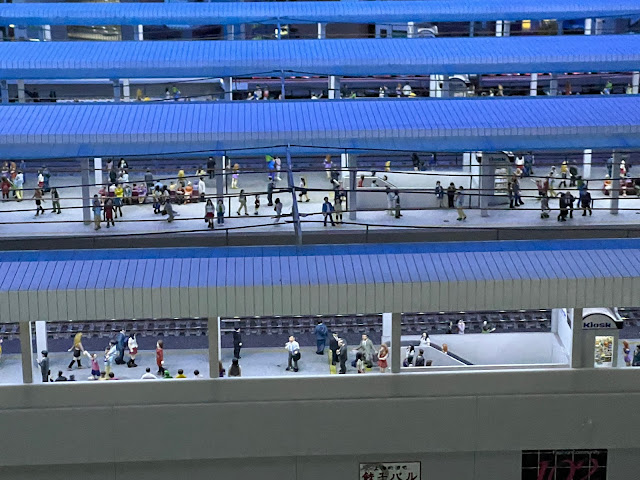Usual morning routine for a rest day: laundry and catching up on emails and other admin.
This afternoon I visited the SC Maglev and Railway Park, which is a sort of museum for train nerds.
There are displays of various types of rolling stock (full size, real) through the ages, from steam locomotives to the latest Shinkansen, some of which you can walk through, plus displays explaining how various aspects of trains and rail systems work, all the way from the wheels to the control centre.
As the name suggests, there’s also an extensive section on the development of Japan’s maglev trains, which are due to come into operation in 2027. Apparently they’ll operate at speeds of up to 500 kmh.
One of my favourite things at the park was a giant model railway, which replicates in miniature some of the features of the Nagoya area.
This is a music festival:
This is central Nagoya and Nagoya station:
This is the level of detail of passengers waiting on the platforms:
Generally, a pleasant and relaxing day. Tomorrow I’ll head back to Utsube via (in part) that quaint little line I took yesterday and start heading up into the hills towards Suzuka Pass.
Update: I’m three-quarters of the way towards my fundraising target of $2000 for the Indigenous Literacy Foundation. As I’ve said, if we get to $2000 I’ll spend a night in a capsule hotel and post the pictures to prove it. If you haven’t yet donated, now would be a good time so that I can make a booking and be sure of securing a pod for the night! My fundraising page is here.






Comments
Post a Comment